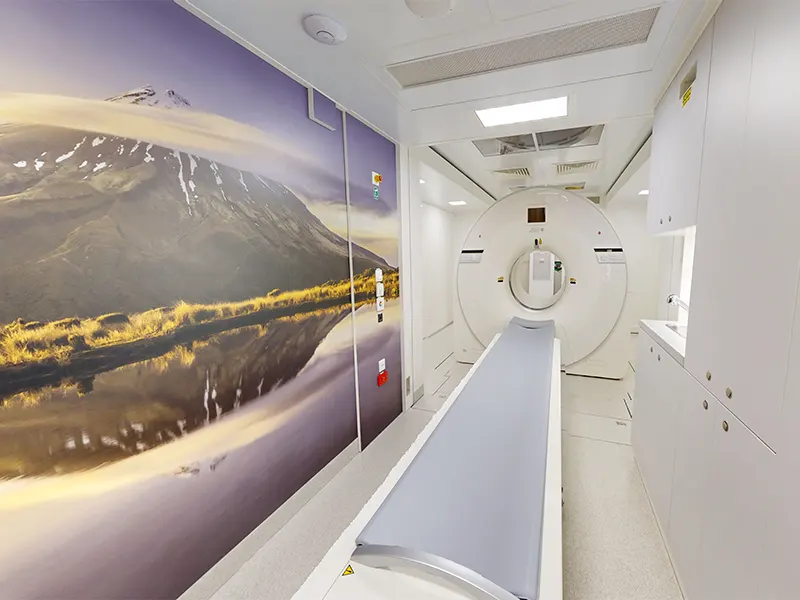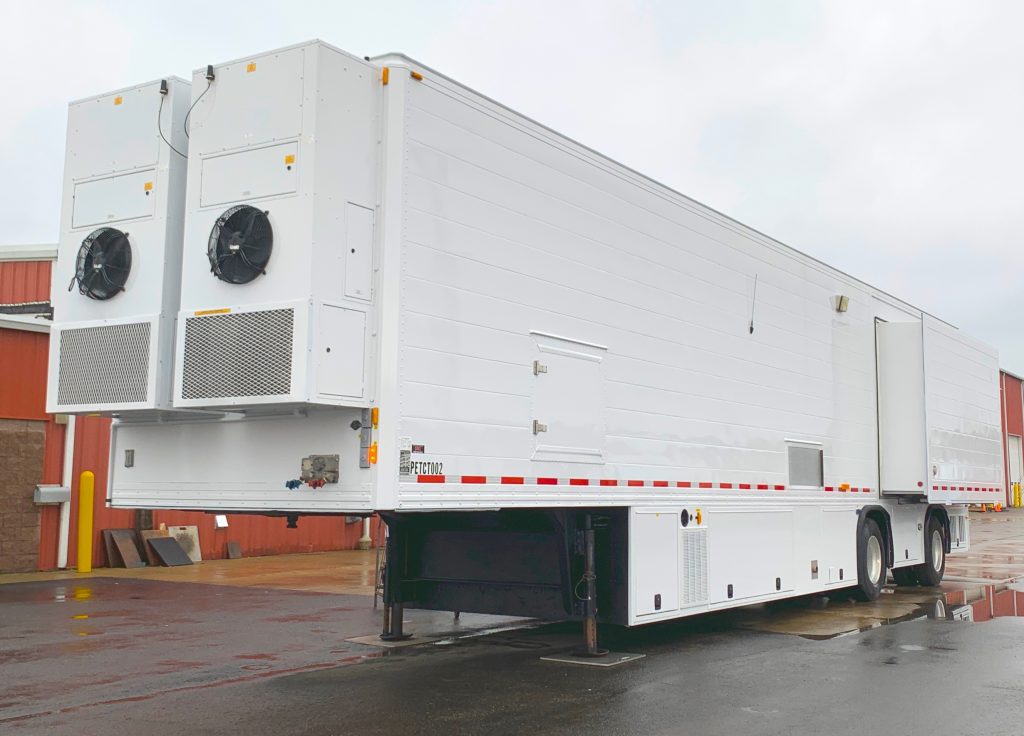Mobile CT vs. Mobile PET/CT: Which is More Suitable for Your Facility?
.png)
If you're considering investing in a Mobile Imaging System, you may be weighing the options between Mobile CT and Mobile PET/CT. While both offer advanced imaging capabilities, they serve different purposes in medical diagnostics. In this blog, we'll talk about the specific attributes and applications of each modality to help you determine which one aligns best with your facility's needs.
What is the difference between Mobile CT vs. Mobile PET/CT?
System Usage:
Mobile CT works with a rotating gantry, a powerhouse cylindrical tube that swirls around the patient during the scan, capturing detailed cross-sectional images of the body. This makes it ideal for hospitals with critical care or trauma units that require quick but accurate scan results or hospitals with high patient volumes daily.
On the flip side, Mobile PET/CT marries the best of both worlds - CT's anatomical insights and PET's functional prowess, offering a thorough, comprehensive imaging, especially valuable in oncology.

Diagnostic Capabilities:
Mobile PET/CT combines the anatomical information from CT with the functional information from PET, allowing for more comprehensive imaging. It's particularly valuable in oncology for detecting cancer at earlier stages. While not all tumors absorb the injectable radioactive material, the ones that do reveal whether they are malignant or benign with great accuracy.
However, Mobile CT alone is still valuable for various diagnostic purposes, including trauma assessment, pulmonary embolism detection, and abdominal imaging. CT scanners are also often used because of their ability to produce scans at a faster rate than most imaging procedures, which allow doctors to make critical medical decisions fast. A Mobile CT would be an ideal choice for hospitals with critical care or trauma units that require quick but accurate scan results or hospitals with high patient volume daily.

Clinical Applications:
Consider the prevalent medical conditions in the healthcare facility's service area. When it comes to diagnosing, each modality brings its unique strengths to the table. Mobile PET/CT stands out with its prowess in oncology, unveiling metabolic hotspots that pinpoint cancerous tissues with unparalleled precision.
Meanwhile, Mobile CT plays a vital role in trauma assessment, embolism detection, and abdominal imaging, making it a go-to for hospitals juggling high patient volumes and critical care needs.

Patient Population:
Depending on where you are located, the patient demographics and the types of conditions commonly encountered should also be a key factor in choosing which models and modalities.
For example, PET/CT is especially beneficial for patients with cancer, neurodegenerative diseases, and cardiac conditions where metabolic activity plays a crucial role in diagnosis and treatment planning. While CT creates quick scans for doctors to have quick assessments and give the best care for their critical patient.
Financial Considerations:

Initial Investment:
Mobile PET/CT systems typically have a higher initial investment compared to standalone Mobile CT scanners. The integration of PET technology adds to the complexity and cost of the equipment. You should evaluate whether the anticipated clinical benefits justify the higher upfront expense by qualifying if your facilities are focusing on generating radiology imaging for higher patient volume or deeper learning of these patients.
Initial prices might not be a big problem any more with Medco Blue’s rental program or “Rent to Own” program where we help you acquire your system after a rental period of time.

Reimbursement Rates:
Investigate the reimbursement rates for PET/CT scans compared to CT scans from insurance providers and government healthcare programs.
The reimbursement rate might vary depending on the system usage, patient volume and how much one facility is charging their patient for each scan. Reimbursement policies can vary, and it's essential to evaluate the financial implications carefully. However, it’s good to note that any Mobile system is eligible to rent and essentially “Rent to Own” in the near future if you’re renting with Medco Blue.
Utilization Rates:
When comparing the expected utilization rates for each modality based on patient demographics, referral patterns, and existing demand. You should determine whether the anticipated volume of PET/CT scans justifies the investment or if a Mobile PET/CT would suffice to meet imaging needs.
With Mobile systems, Mobile CT tends to have longer usage time as people would normally rent Mobile PET/CT for shorter time for around 2 weeks to 2 months while Mobile CT can be rented from 1 month to 12 months.
Operational Costs:
Consider the ongoing operational costs, including maintenance, radio-pharmaceuticals (for PET), and staffing requirements. PET/CT systems require specialized training and expertise for both imaging and radiation safety, which may affect staffing costs.
While the operation cost of the two mobiles might be the same, the utilization rate of one might alter the operational cost analysis. Take for example, Mobile PET/CT will typically be used in a shorter amount of time than Mobile CT because CT can take more patients and scan more general diseases. Therefore, some facilities might find it easier to purchase a Mobile CT and rent Mobile PET/CT when demand is high.
Flexibility and Adaptability:

Mobile vs. Fixed Units:
There is no doubt that a Mobile System could help any facility in maintaining patient volume, keeping patient backlog to the lowest rate possible, saving on time and money of investment in a fixed unit, dealing with lack of space in both small and large healthcare providing facilities.
Mobile units offer flexibility in terms of deployment and can be particularly advantageous for facilities with fluctuating demand or limited space. Therefore, both Mobile PET/CT and Mobile CT are well needed in this situation.

Upgrade Path:
You should consider the future scalability and upgradeability of the chosen modality by evaluating whether the system can accommodate technological advancements and evolving clinical needs without necessitating a complete replacement.
Yet, with the assistance of AI and the development of technology, any systems and modality (whether mobile or fixed) would have a scalable option to upgrade gradually but still remain cost-effective. Additionally, some of the Mobile modality truly understand the concept of “mobility” where they build their system to be upgraded on the go with less fee associated with it so this should not be a problem on newer models.
Takeaways:
Ultimately, the decision to purchase a Mobile CT or Mobile PET/CT should be based on a comprehensive assessment of the healthcare provider's clinical requirements, financial resources, and strategic goals. Balancing medical benefits with financial considerations is crucial to making an informed investment decision that optimizes patient care and operational efficiency.
Still not sure? Contact us at sales@medcoblue.com or call (216) 600-0801 to set up your Mobile CT or Mobile PET/CT today!
Get a quote today on Mobile CT and Mobile PET/CT:
Call (216) 600-0801 or email us at sales@medcoblue.com
